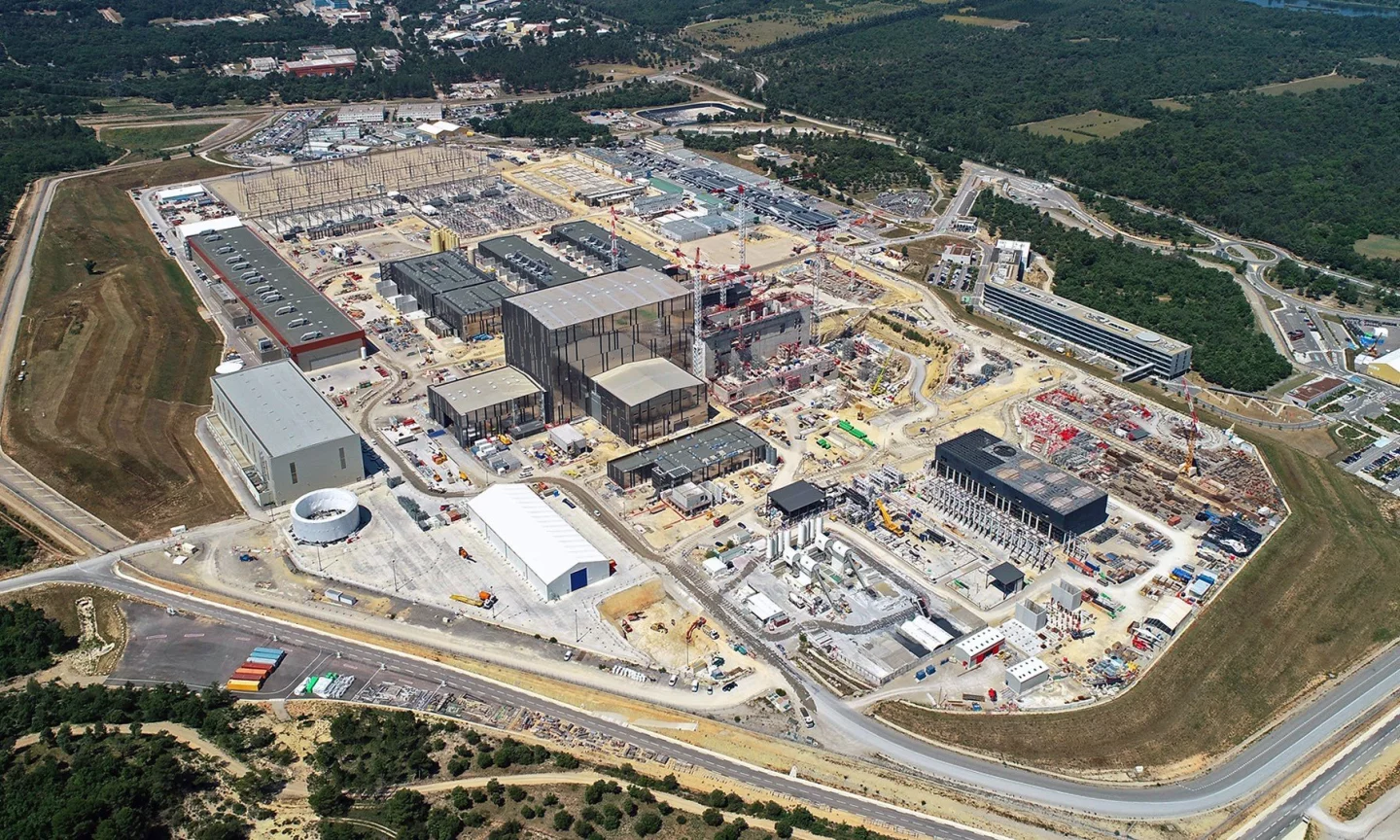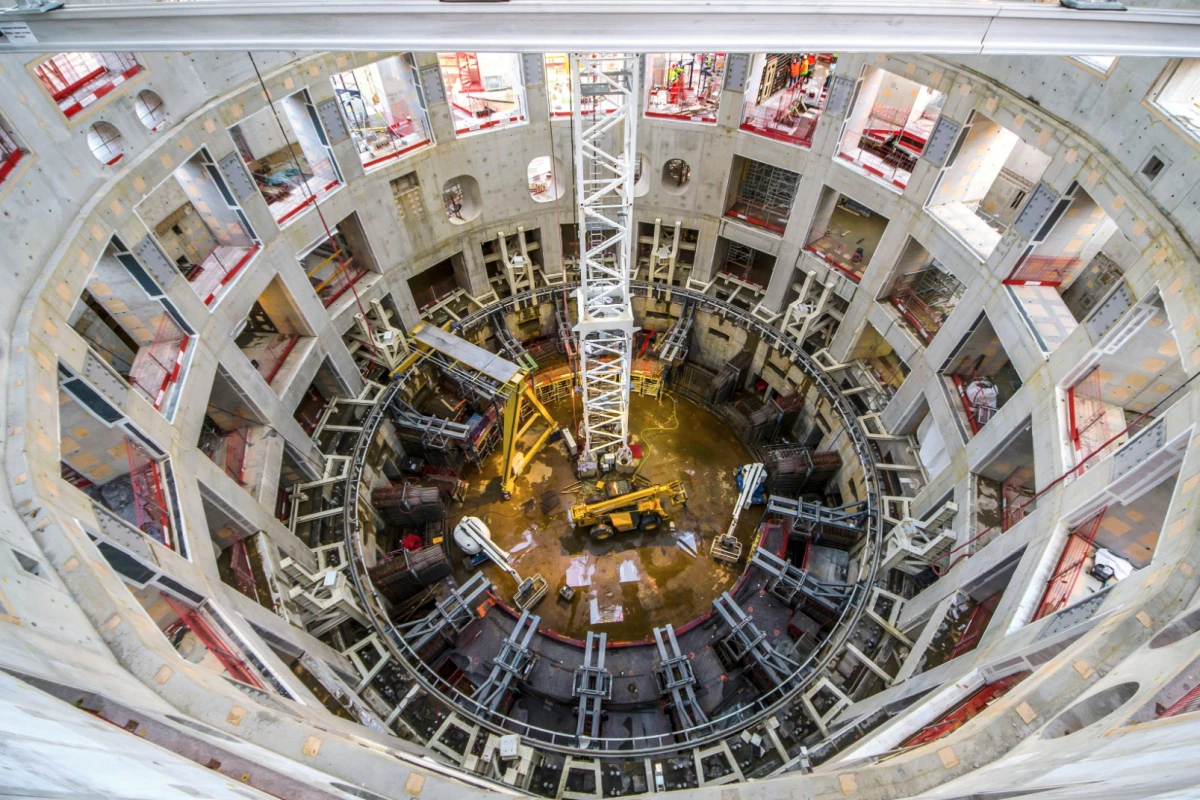The structure that will house one of the largest and most ambitious energy experiments in history is now complete, with engineers working on the ITER Tokamak Building swinging their last pylon into place in readiness for the nuclear fusion reactor's assembly stage. Nine years in the making, the facility is built to host the type of super-hot high-speed reactions that take place inside the Sun, and hopefully advance our decades-long pursuit of clean and inexhaustible nuclear fusion energy.
In the works since 1985, ITER (International Thermonuclear Experimental Reactor) is a type of nuclear fusion reactor known as a tokamak and is a collaborative project involving thousands of scientists and engineers from 35 countries. These donut-shaped devices are designed to accommodate circular streams of plasma consisting of hydrogen atoms, which are compressed using superconducting magnets so that they fuse together and release monumental amounts of energy.
There are key technological challenges to overcome when it comes to tokamak reactors. Chiefly, these center on bringing them up to the required temperatures and keeping the streams of plasma in place long enough for the reactions to take place.

A number of experimental tokamak devices are in operation around the world and continue to make strides toward the goal of practical nuclear fusion power generation. These include UK firm Tokamak Energy’s device, which last year hit temperatures of 15 million degrees Celsius, and China’s Experimental Advanced Superconducting Tokamak, which in 2016 maintained superheated plasma for a record 102 seconds and last year hit internal temperatures of 100 million degrees Celsius.
None will reach the heights of ITER, however, both figuratively and literally. Vinci is the construction firm behind the Tokamak Building and has just put the finishing touches on the 73-meter-tall (240-ft) structure that will house the largest tokamak reactor on the planet.
ITER will play host to streams of plasma 10 times thicker than the largest tokamak in action today. The premise for building such a large version of an experimental device is quite straightforward – the larger and longer the plasma streams, the greater opportunity there is for nuclear fusion reactions to take place.

The most power a tokamak reactor has ever put out is 16 MW, a record achieved in 1997 by the UK’s Joint European Torus tokamak. The team behind ITER has set its sights on 500 MW. With construction now complete on the building, workers will soon begin putting together the millions of parts making up the reactor.
This assembly phase is expected to take five years, with the team hoping to achieve first plasma in 2025.







